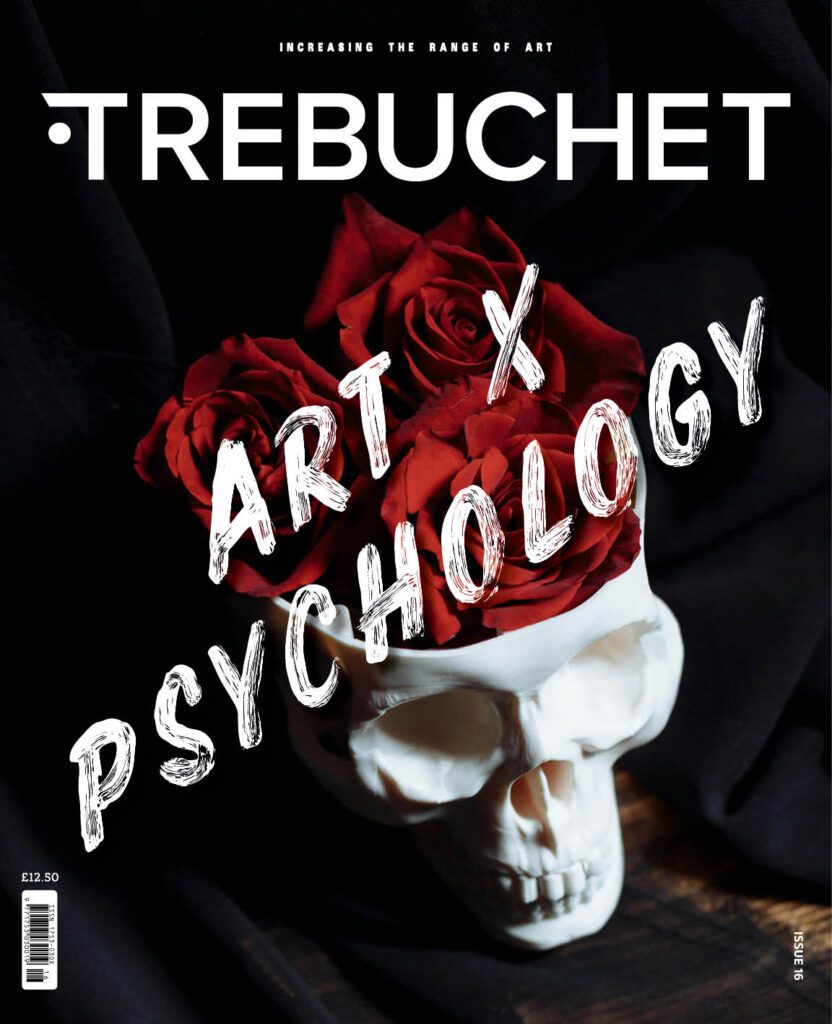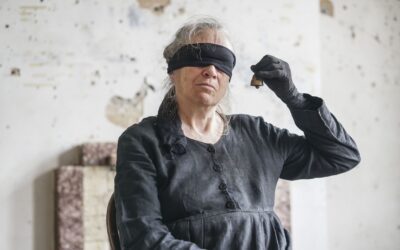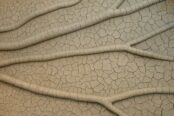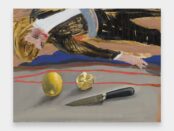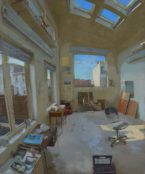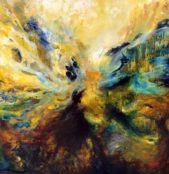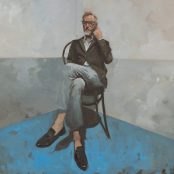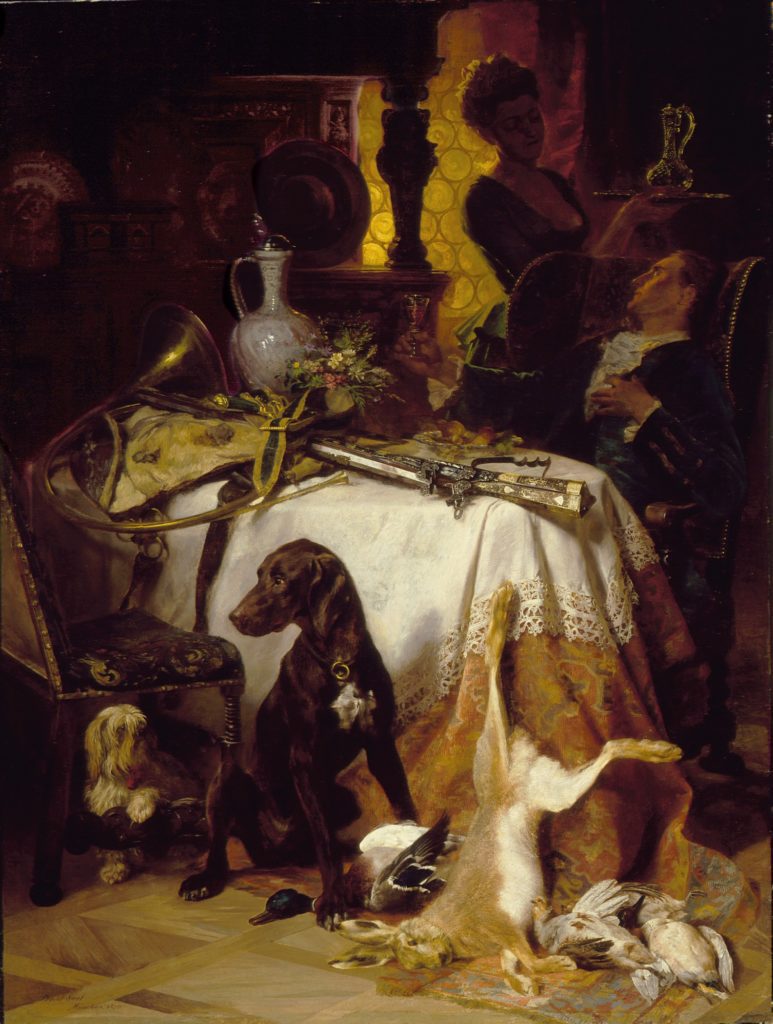Soon about to lead a workshop On Practice and make a new performance in London as part of Future Ritual‘s festival Ceremony, renowned performance artist Marilyn Arsem continues her conversation with Rob La Frenais, picking up on the experience of attending one of her performance art workshops.
*****
The writing was another interesting aspect, because we were told to write and then expected to have to read it out. And then sometimes we’d write a whole ream of stuff, and you just move on to the next exercise.
I never asked you to read it out! I always said it would be private. It really is intended for your own reflection. But the questions that I asked you to respond to in the group discussion in the workshop could be considered a distillation of the questions for writing.
Carrying on back with the device for measuring people’s reactions during the discussion period. It was interesting because we had a workshop straight afterwards — which you also took part in — and I found the contrast very frustrating; people went on and on and I had enough of it.
I do like a structure that allows you to have a sense of how long discussions and exercises will be. It lets you pace yourself. By the way, you know that without limitations people tend to repeat themselves three times.
Let’s talk about the durational aspect of this. So when you first asked us to take thirty minutes to cross a room, and then thirty minutes to watch the other group crossing, that was pretty, challenging. But by the end of the five days I could probably have done it. Do you think durational performance, therefore, could be for anyone who’s properly trained?
I think there is another question in there. Yes, people can be trained. But whether doing this kind of work is interesting or useful to them is another question. I had a student in a durational class that I taught at the School of the Museum of Fine Arts who hated the extended exercise of repetition and decay. I realized afterwards that they just weren’t willing to think about losing control as things fell apart. I sometimes wonder if they would think of it differently now that they are older. But the content that people finally are interested in pursuing may or may not be served by duration.
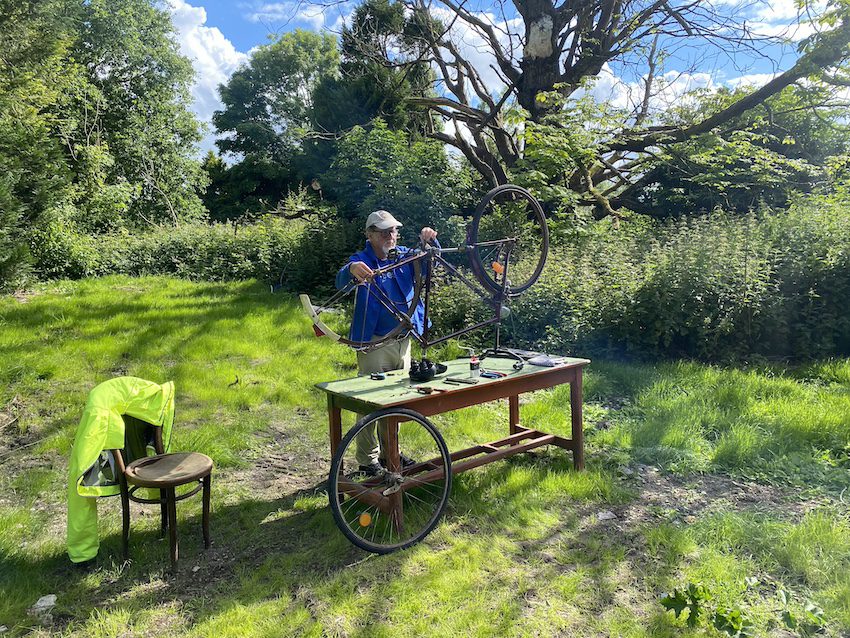
Durational work allows you to discover where the action goes through time, in time. In my experience you have certain ideas about what will happen. But you move through those pretty quickly. It is in the extended time that you begin to discover other ways to understand the action, and other reasons for doing it. The action reflects meaning back to you in a different way than you expected.
But it is a very specific type of work, and not all performers are interested in letting work take them into unknown territory or raise other questions. I mean, some performers want to control every second of the work and shape it and hold it, and be excellent in their execution of it.
That’s acting. As opposed to performance art.
Speaking of acting, I want to go back to the exercise I told you about where I ask the participants to do two actions — first to demonstrate something they know, and the second to do something they’ve never done before. After the participants do those two actions, I ask them to repeat the action that they had never done before. And at that point we have a very interesting discussion about acting, because, of course, they have done the action before, so what happens when they try to do it again, as if they had never done it before? That is an acting problem.
That brings us to the nature of performance art, how you can define it and how in in Europe, to some extent, it does get mixed up with the performing arts very much. I wondered if you had your own personal definition of what you would call performance art.
Well, I have a very stark one, which is ‘performance art is an action designed and executed by an artist that takes place in time and space, with or without a viewer.’
That’s a bit like what Carl Andre said ‘Art is what artists do’.
Oh! There is also my other definition of performance art! ‘Doing things with stuff.’ It reminds me that I included an exercise with materials that you did outdoors in the workshop. Generally in performance you are doing thingswith materials or objects. But we so often impose our own meaning and understanding onto the materials that we use without paying attention to their own reality and lives. Materials have their own time frame and process of decay. I am interested in seeing what happens when you collaborate with your materials, when you allow them to speak to you, with you, through you.
Can you give an example?
I suppose the clearest example is a work that I did in Amsterdam in 2019 called Water Moving. Each day at noon I poured a litre of water onto the floor of the gallery, and then every hour for the next six hours, I marked the outline of the water. At the beginning the water spread into the room, but later in the day it began to recede and evaporate. The result was a floor drawing of the movement of water over 12 days. I quickly realized that the water was the performer, and I was merely marking and recording its movements. It was definitely a collaboration with a material!
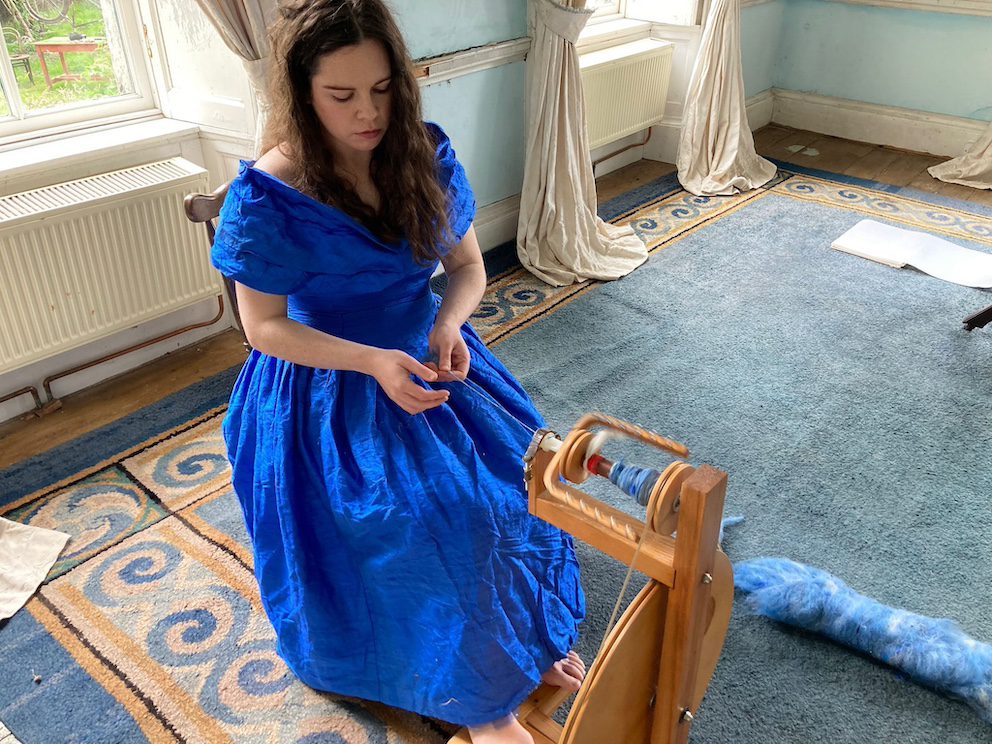
Let’s just think about Alastair MacLennan who I’ve had some experience working with as a curator back in the ‘nineties. I think it’s taken this workshop to kind of understand Alastair’s practice a bit more than just seeing him from the outside. I wondered if you had any comment on him as another artist.
You know, I’ve worked with Alastair a lot. Did I ever tell you that I had met him in 1986 in Seattle, Washington, USA? But he was introduced to me as a Scottish sculptor, so it took many years before I connected him to the performance artist from Northern Ireland who I began to work with regularly 16 years later.
I met him first not long after that would have been 1987, I think, in Newcastle, then I invited him to do a performance in a Victorian prison cell, where they’d kept Irish prisoners in Clerkenwell, in London so I have experience of putting him in places, but not putting myself into his place.
I’ve watched a lot of Alastair’s work over the years that has ranged from commentary on The Troubles in Northern Ireland, to reflections on personal family history. He often uses the framework of moving around a long table, or back and forth along a rectangular path, as well as wearing particular attire such as eyeglasses that block his vision, and also incorporating art materials resulting in paintings or drawings, or sculpture. These are elements that I see him reusing. But I end up reading them differently in each of his performances, because of how they are combined and unfold differently, resulting in new aspects becoming highlighted. That is interesting to me.
You can certainly see the influence of his Zen practice. In fact, I experience his work as a meditation. (He is also going to be performing in April at Ceremony, in London. And Anne Bean as well!)
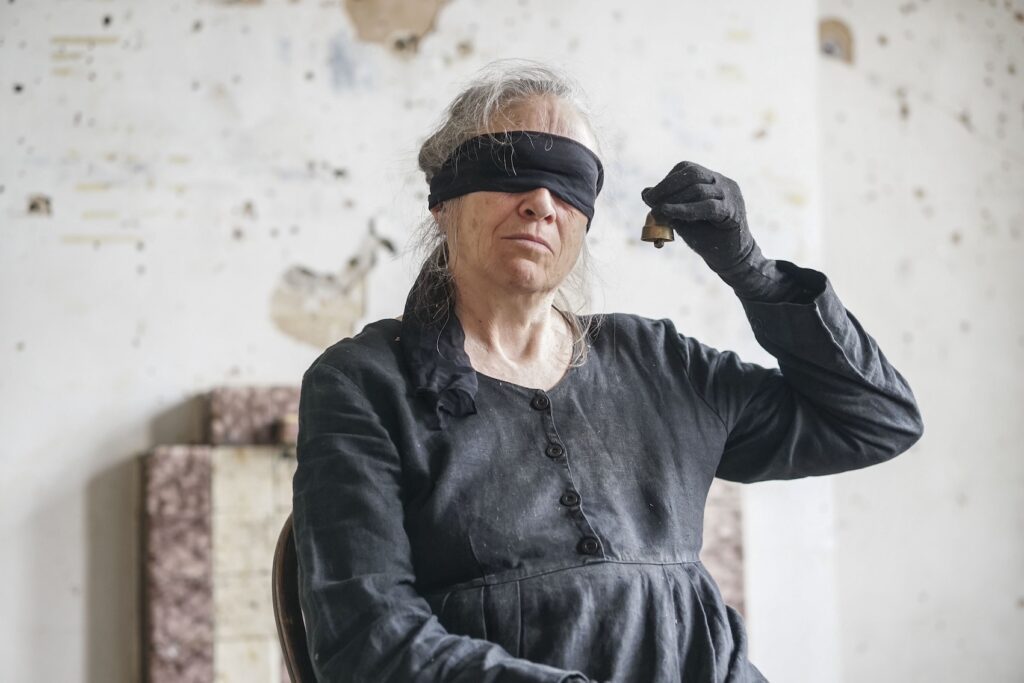
I would just go back to your experience of being a workshop leader and using a certain amount of discipline. I trained as a rower in a rowing crew in my forties. And I was an artistic person, and I had to learn to just forget all that, and do exactly what the coach says exactly when they said it and if you didn’t, you were very, very unpopular. So losing autonomy, and just completely giving yourself up to the workshop, actually what you managed to get us to do, is great. So could you comment on that that submission aspect of doing a workshop like yours. Do you get resistance? Do people resist your method?
Usually, people’s resistance isn’t so visible to the other workshop participants, which is good. It doesn’t disrupt other people’s efforts to do the work. But I’ve had really fascinating conversations outside of the sessions, asking them what was difficult about that exercise, or what was it that the exercises didn’t allow them to do it. It’s often about wherever they are in their personal life or in their artmaking life. In a way it’s almost as much a surprise to them that they are resisting. They have actually made the effort to sign up for the workshop and come, so I don’t believe that they came intending to resist.
So how do you sense that resistance if it’s not obvious?
Well, it’s not ‘not obvious.’ But I don’t think it’s obvious to the other participants because they’re working, they are in the process of doing the exercises. But I’m watching everyone, so yes, I can see it.
Has it a got an age connection? I mean, I was probably one of the oldest participants at Live Art Ireland, and presumably you have different ages doing your workshops.
No, it has been less about age and more about personal issues, where people are personally….
Has anyone ever actually like thrown in the towel and said, I can’t do this?
No, not yet.
Everyone’s seen it through.
Actually, that’s not true! There was one person in a workshop who wanted to do the work. They had come late, so for some reason they had missed the first day, which is already a complication. And then they dropped out after two days. They said it didn’t have to do with the work itself, but that they weren’t comfortable talking about the work with the group. They didn’t like the discussion aspect of the workshop but indicated that it had to do with their own state of mind and where they were personally.
So it’s not entirely for everyone. This has all been about time. Is time your only material? Or do you have some other materials you want to work with?
I have regularly taught a workshop on site-specific work called Responding to Site, though I haven’t done that one since before the pandemic. A more recent workshop that I have taught is called Performance as Experiment, and it is about working with materials, but choosing actions for which you don’t know the end result. It is about designing an action where you discover or learn something, with the audience, and in front of the audience. As opposed to doing a performance where you are informing them of something that you already know. And the workshop that I’m teaching in London in April is called is On Practice. Each participant is looking at their own practice, how they develop work, examining what drives the work content-wise, and the rules that they follow consciously or unconsciously. I haven’t taught it for 20 years, so I’m definitely going back to my notes to redesign it.
I’m sure I have some new ideas about how to get at those questions. When I did it 20 years ago everyone in the group did an exercise in which they made work that was the opposite of what they normally did, breaking their own rules. We definitely agreed that no one would talk about what anyone did outside of the group!
So can we return to how you are going to respond to the mayhem in the United States going on right now?
I’m doing a performance here at the end of March at Boston City Hall, as part of an evening of events by Mobius Artists Group, of which I am a member. The Brutalist building has a very long flight of stairs in its center. I decided to do a conversational piece in which I will be blindfolded with one hand out, asking people to help me.
The title of it is How To Move Forward (one step at a time): Advice and Assistance Needed. I’m going to to be asking people to help me take a step, and I will engage them in conversation about how they’re dealing with this situation in the US, what they are doing to resist.
But it is daunting to be trying to think of what I will do in London at the end of April. The performance is still almost two months away, and our country, the US government, is being dismantled more rapidly than anyone expected. I know that what Viktor Orban did in Hungary is a model for Trump and Musk. Hitler is another example of someone who Trump admires and seeks to emulate. The performance is in a gallery, which already makes it aestheticized. How do I break through that neutralized, neutered, environment? Should I be underneath a table? I don’t want to hide. Or is it a bunker? How do we fight back? How do we resist? I might be reading out loud, talking, trying to figure out what to do, pushing stuff into the room, screaming. But can I scream for 4 or 5 hours?
It’s interesting that what you propose with the staircase is the opposite of that. One’s instinct is to hide. And my instinct would be too if I was there. So this is a proposed response. It is a desperate situation, and it’s interesting that you are able to at least formulate strategies for dealing with it, because I think a lot of people are finding that very difficult. So you may do something different?
I will design a structure that lets me respond to whatever the current situation is in April. One of the most valuable aspects of performance art is that it can be responsive to the immediate situation. It is a solo activity that is live and unrehearsed, which allows the artist to make changes in the moment, even as the performance is happening.
Read part one of this conversation here.
Stars image by Pexels/Pixabay
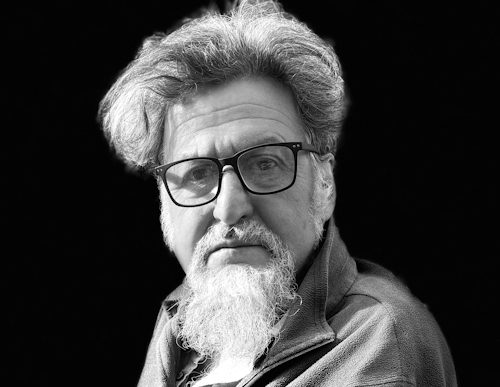
Rob La Frenais is an independent curator, artist, writer and lecturer and works closely with artists on original commissions. He founded Performance Magazine in 1979 and became an independent curator specialising in performance and installation in 1987 and continues to work and write internationally.




